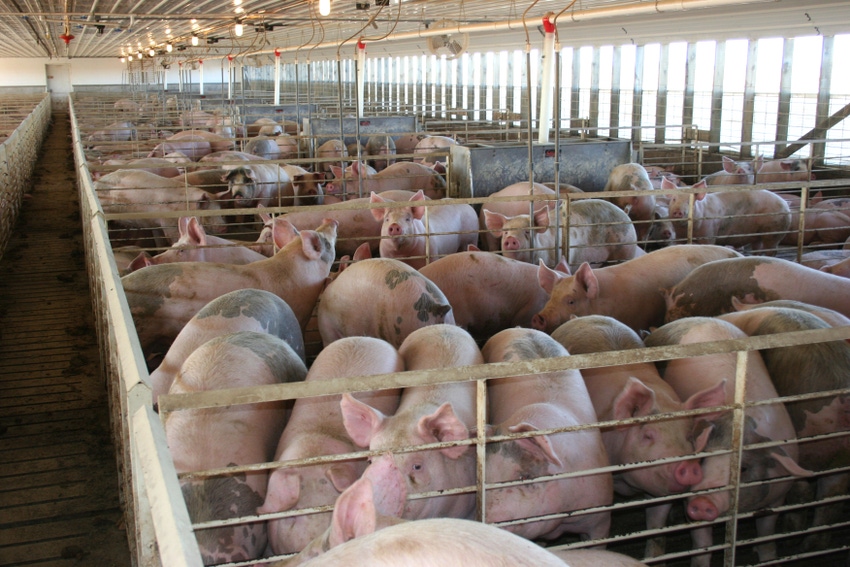Pork production will lead growth, but through gradual recovery process as African swine fever is still active.
November 19, 2020

Animal protein production growth is expected in most regions in 2021, with the biggest change taking place in Asia, where the impacts of African swine fever (ASF) are fading, according to Rabobank’s “Global Animal Protein Outlook 2021.”
Rabobank expects pork to lead the growth through a gradual recovery process, as ASF is still active. Poultry and aquaculture are also forecasted to grow, followed by beef. Wild-catch seafood production, however, is expected to decline.
The global animal protein trade continues to create areas of opportunity and risk, with China being the biggest of many areas of uncertainty in global trade.
Rabobank relayed that animal protein has been disrupted by the COVID-19 pandemic in 2020, largely due to processing plant restrictions, global trade and distribution through foodservice channels. In 2021, the focus will be on recovery, with foodservice recovery, labor availability and costs and supply chain transformations being the major issues, the firm said.
“Many other issues affecting global animal protein mean that uncertainty will remain into 2021. These issues include managing higher feed prices and governments’ increasing engagement on animal protein.”
Regional outlooks
In North America, production for all species will change only marginally in 2021, according to Rabobank. The strongest growth will be for beef, based on post-COVID-19 adjustments. However, all species will depend on strength in export flows in order to balance domestic demand, the firm said.
Poultry is expected to return to growth in Europe due to a recovery in the foodservice sector, while pork and beef production are expected to decline on soft confidence.
China’s ASF recovery continues to dominate the pork outlook, with growth expected in 2021. Poultry will have another strong year, but beef will rise only marginally, Rabobank forecasts.
Poultry production in Southeast Asia is set to recover from a tough year. Beef production and consumption will also recover after a difficult 2020. Rabobank said pork will recover in Vietnam but will remain constrained in the Philippines.
Rabobank expects Brazil to show production growth for all species in 2021, but this will be more modest than in recent years. Exports will drive production, given soft domestic demand.
The outlook said tight livestock inventories in Australia will support prices and constrain production, with a similar outlook expected for New Zealand. A slight rise is expected for beef production, while a slight decline is expected for sheep meat.
Market recap
February live cattle futures were mostly lower this week, closing Monday at $112.025/cwt. and Thursday at $110.525/cwt.
January feeder cattle futures started the week higher, closing Monday at $137.925/cwt. and Tuesday at $139.725/cwt. Contracts fell Wednesday and closed lower again Thursday at $135.55/cwt.
The Choice and Select cutout closed higher at $237.70/cwt. and $213.89/cwt., respectively.
February lean hog futures were lower at the beginning of the week, posted gains midweek but fell again Thursday. Contracts closed higher Wednesday at $65.90/cwt. but fell Thursday, closing at $63.050/cwt.
The pork cutout was mixed but mostly lower this week. The wholesale pork cutout was lower at $77.68/cwt. Loins were higher at $71.61/cwt., while hams were lower at $70.52/cwt. Bellies continued to fall, closing at $96.33/cwt.
Hogs delivered to the western Corn Belt were lower, closing at $58.72/cwt.
The U.S. Department of Agriculture reported the Eastern Region whole broiler/fryer weighted average price at 71.45 cents/lb. on Nov. 13.
According to USDA, egg prices were unchanged, with a steady to cautious undertone. Supplies varied and were light to, in some instances, heavy for needs nearing the holiday. Offerings were light to readily available, and demand was moderate to good.
Large eggs delivered to the Northeast were unchanged at $1.07-1.11/doz. Prices in the Southeast and Midwest were unchanged at $1.12-1.15/doz. and 99 cents to $1.02/doz., respectively. Large eggs delivered to California were unchanged at $1.76/doz.
For turkeys, USDA said the market was steady, and demand was moderate to good. The price range for hens and toms was $1.05-1.20/lb.
You May Also Like



